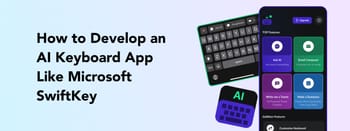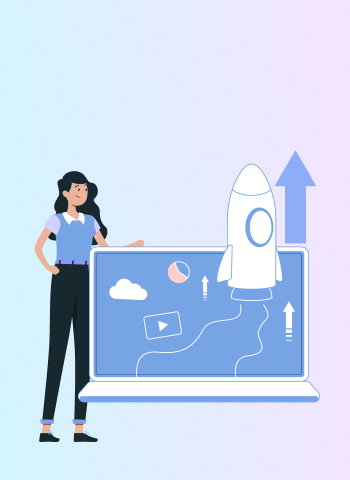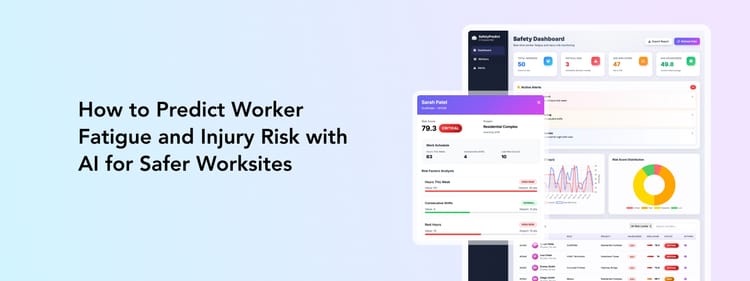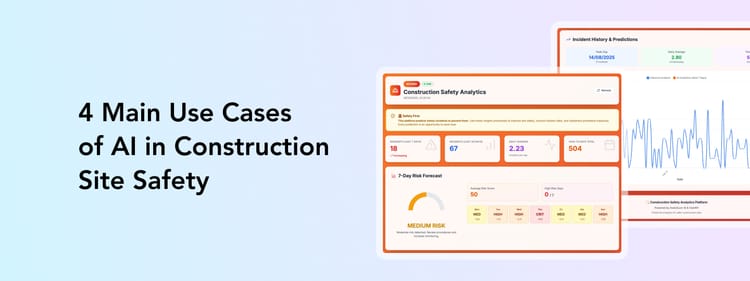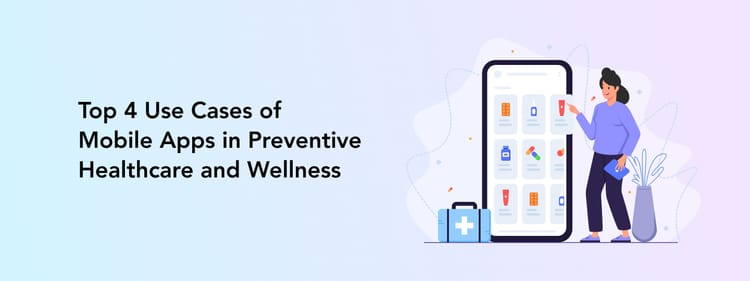Responsible energy production, distribution, and consumption are the pillars of the green energy sector. While drawing energy from natural sources like solar panels and wind turbines is a great alternative to traditional energy production, technology, like the Internet of Things, can be a game-changer for better energy efficiency.
From predicting energy demand so the production volume matches it to keeping track of in-home energy consumption, IoT offers several benefits to businesses and end-users.
This article provides insights into the main benefits and applications of IoT mobile apps in the green energy industry and features a step-by-step guide on how to develop an IoT energy app from scratch.
Benefits of IoT Green Energy Apps
IoT in the renewable energy market size is expected to reach nearly $ 105.47 billion by 2029 with a CAGR of 7.8%. Such numbers are not surprising as the Internet of Things is one of the main technologies facilitating green energy production.
Renewable energy has already taken up 13% of all US energy consumption in 2022. As the demand for residential, commercial, and industrial infrastructure is growing, so is the need for convenient and portable facility monitoring solutions.

A mobile app is a simple yet effective solution for monitoring real-time energy sensor data and generating predictive reports. Let’s consider why businesses invest in IoT mobile apps with sensor-tracking functionality.
Supply-demand balance
As sun or wind energy production can sometimes be unpredictable, periods of shorter energy supply or overproduction happen. Overproducing energy is not only costly but harmful to energy systems, too. Overgeneration of renewable energy from solar or wind panels leads to damage to grid systems that are not equipped to handle a higher volume of energy.
Balancing energy supply and demand plus avoiding overproduction is possible with IoT sensors and mobile app control. IoT mobile apps with sensor tracking functionality enable real-time monitoring of energy production and consumption. By analyzing this data, businesses can adjust production levels to match demand, preventing overproduction and optimizing resource utilization.
For example, it’s possible to temporarily disconnect some energy sources, like solar panels, when an app warns about an overproduction risk or sends a notification warning users about a lower energy supply on certain days.
Cost efficiency
While energy produced by renewable sources is cheaper than traditional generation methods, it’s in no way free for businesses and end-users. Making sure there is a minimum possible amount of energy waste and that all the sources are generating the most effective amount of energy should be a priority for renewable energy businesses.
By collecting data over time, IoT mobile apps allow for establishing patterns in energy consumption to optimize generation respectfully. For example, companies can monitor peak consumption times during the day and produce a maximum amount of energy just for those hours instead of keeping up a high consumption volume at all times.
Empowering end-users
Energy consumers don’t tend to have much information about the amount of power they use, which household appliances consume the most energy, or how to cut down on their energy intake. For the most part, their awareness is limited to the overall energy spending in the household over a certain time based on the electricity bills.
Introducing in-home IoT technology can shed some light on energy use trends for end-users and promote energy democratization when consumers have the power to make informed decisions based on household device electricity usage data.
Our recent IoT mobile app project was developed exactly with this goal in mind. Users can view the electricity intake of every connected smart home device and get a better understanding of how they can lower their energy consumption based on which appliances take the most energy. For example, seeing that a heater eats up a rather high amount of electricity, a user can consider switching it on for only a limited period every day.
Control and automation
Maintaining a renewable energy infrastructure, like a wind turbine or a solar panel, requires regular checkups with an employee or a household owner climbing up heights to inspect a device or find out the reason for malfunctioning. Plus, green energy infrastructure of the bigger scale is often located in remote areas making it both difficult and risky for individuals to review the generators.
IoT takes the hassle of physically getting involved to fix the smallest issue. With an IoT app, all the production and safety sensor data is transferred to the app’s interface, so the person responsible for the maintenance and repairs can review any changes without having to physically see the generator.
Additionally, some types of renewable energy devices need regular adjustments. Sometimes businesses or individuals might simply want to turn the energy producing unit off. IoT apps allow these actions just from a smartphone. For example, users can adjust the angles of solar panels to maximize their effectiveness.
Main Applications of IoT Energy Mobile Apps
An IoT app has a variety of applications depending on the end-user, business type, and its primary purpose. From household energy use monitoring to predictive maintenance for green energy businesses, IoT apps make benefiting from renewable energy sources easier.
Smart HVAC
HVAC stands for heating, ventilation, and air conditioning. While many households are equipped with these utilities, a smart HVAC system can add to their effective usage. Smart HVAC includes sensors such as air temperature, humidity, lights on or off, etc.
Smart HVAC introduces extra convenience, safety, and cost saving for residential and commercial buildings. By monitoring and managing the HVAC controllers through a mobile app, users can get more power, make their houses comfortable with remote control, and always be on track of how much electricity they consume.
Perpetio has recently implemented a smart HVAC app. We created a remote control app as an all-in-one hub for smart home system owners. Perpetio’s team divided all the smart home devices into categories according to the rooms, like the living room or kitchen. Each room has its own screen with the basic parameters of its devices and essential switches for the connected devices. Plus, we created a separate screen for each smart home device with more controls.
Smart grids
Smart grid system is the main technology behind a balanced supply-demand approach. Let’s be honest — it’s virtually impossible to constantly gather up-to-date energy data manually.
Smart grids are electric networks that use digital technologies, such as IoT, to maximize energy production efficiency and maintain stability in the energy system. IoT sensors allow viewing both real-time data and analyzing historical data over a certain period to establish energy production and consumption trends.
Such insights are essential for more effective voltage regulations, supply volume decisions, and production forecasting. AI algorithms can give accurate consumer demand, energy price, and required production volume forecasts to adjust the turbines or panels. Plus, businesses and households can even get electricity production volume predictions based on weather forecasts.
Smart meters
Smart meters are IoT meters that record electricity, water, gas, and other utility consumption to help users make informed decisions and maintain their households more easily. Smart meters offer insights into utilities consumption and promote energy and water conservation.
Let us explore the smart meter application in our recent IoT mobile app case. Our team's main goal was to convert raw energy consumption data from various devices into user-friendly, visually appealing reports. This task involved transforming abstract kW/h data into easily understandable graphs and charts highlighting consumption trends. Additionally, organizing data from numerous devices coherently and intuitively presented its own set of hurdles, requiring good information architecture.
We transformed the app interface into a visually enjoyable environment by implementing a dynamic color palette and intuitive layout. Our team developed a comprehensive graph system that clearly represents energy consumption trends over various time intervals, including daily, weekly, monthly, and yearly views. Moreover, users can easily access detailed insights into individual devices' energy usage, presented in kilowatt-hours (kW/h) and percentage formats, enabling them to make informed decisions about their energy consumption habits.
Real-time asset monitoring
A variety of IoT sensors, such as pressure, temperature, vibration, humidity, and more, allow for keeping an eye on the green energy infrastructure at all times without physically being present on-site. Real-time asset monitoring provided by IoT energy mobile apps enables businesses to detect anomalies and potential issues promptly, preventing costly downtime and optimizing maintenance schedules.
For instance, vibration sensors installed on wind turbines can detect irregular vibrations, indicating potential mechanical issues that require attention. Similarly, temperature sensors on solar panels can identify overheating or cooling inefficiencies, allowing for timely interventions to maintain optimal performance.
Predictive maintenance
An IoT app does not only hold information about the current status of renewable energy infrastructure but also offers data-based predictions on when to update certain elements. By analyzing data from IoT sensors over time, the app can actually predict when equipment might fail in the future. This allows businesses to plan maintenance in advance, reducing downtime and keeping operations running smoothly.
Imagine a wind farm that relies on multiple turbines to generate electricity. Each turbine is equipped with smart sensors that monitor its performance. One day, the sensors detect unusual vibrations in one of the turbines. Instead of waiting for it to fail completely, the IoT energy mobile app sends an alert to the maintenance team.
Upon investigation, the team discovers a minor issue with the turbine's bearings. They quickly address the problem, preventing a potential breakdown and costly downtime. But here's where predictive monitoring comes in. By analyzing data from the sensors over time, the app predicts that another turbine is likely to experience a similar issue in the near future due to similar patterns in vibration.
Armed with this insight, the maintenance team schedules maintenance for the identified turbine, preventing a future breakdown and ensuring uninterrupted energy production. Thanks to predictive monitoring with IoT energy mobile apps, the wind farm can operate smoothly and efficiently, maximizing its renewable energy output.
How to Build an IoT Green Energy App
Creating an IoT green energy app involves building a multi-layered architecture, which is more intricate than a typical mobile application. Unlike traditional apps, IoT apps interact with various devices and sensors, requiring seamless data exchange.
An IoT mobile app typically comprises four layers, each serving a distinct function in enabling users to monitor and manage devices remotely. Let's delve into each layer to gain a comprehensive understanding of how an IoT app operates.
Layer 1: IoT-connected devices and sensors
At the foundation of an IoT application lies the array of connected sensors, devices, and actuators. These devices collect data on parameters such as temperature, motion, humidity, or power consumption, which is then transmitted to the app's interface. This layer, often referred to as the perception layer, serves as the primary data collection point, facilitating insights and remote device control.
Layer 2: IoT networks
The data collected by sensors needs to be transmitted to the main application, and this is where IoT networks come into play. Various network connectivity options, including Wi-Fi, Bluetooth, and cellular networks, facilitate data transmission based on device proximity and communication requirements. Additionally, messaging protocols such as MQTT and HTTP enable efficient data exchange between devices and the application.
Layer 3: IoT middleware
Once sensor data is transmitted via the network, it undergoes processing through dedicated APIs. This involves aggregating, formatting, and structuring the data into a unified format suitable for end-user consumption. Cloud storage plays a crucial role in this layer, housing the processed data and enabling real-time and historical data analysis. Machine learning techniques can further enhance data analysis capabilities.
Layer 4: IoT application
The final layer of an IoT app is the user-facing interface, where users can access sensor data and control connected devices. The app presents data in an intuitive manner, often using graphs and charts for visualization. Users can interact with devices, sending commands such as turning lights on or off, adjusting temperatures, and more directly from the app interface.
Consider Perpetio Your Reliable Partner
IoT green energy apps are highly beneficial for businesses offering alternative energy solutions and consumers looking for more eco-friendly ways to use electricity. However, implementing them poses some challenges, as they also require connecting sensors, establishing data transfers, and so on. That's where a professional team specializing precisely in IoT app development for the green energy sector becomes invaluable.
Perpetio has hands-on experience building IoT apps for the renewable energy sector, like the smart meter app or a smart home remote control solution. We understand that building successful IoT applications requires more than just technical expertise – it calls for a deep understanding of the industry, the needs of stakeholders, and the end-users. That’s why we take time to investigate your potential users and their problems to offer the most effective feature set and visuals.
Ready to embark on your IoT journey? Contact us today to learn more about our IoT app development services and start building a greener future together.

